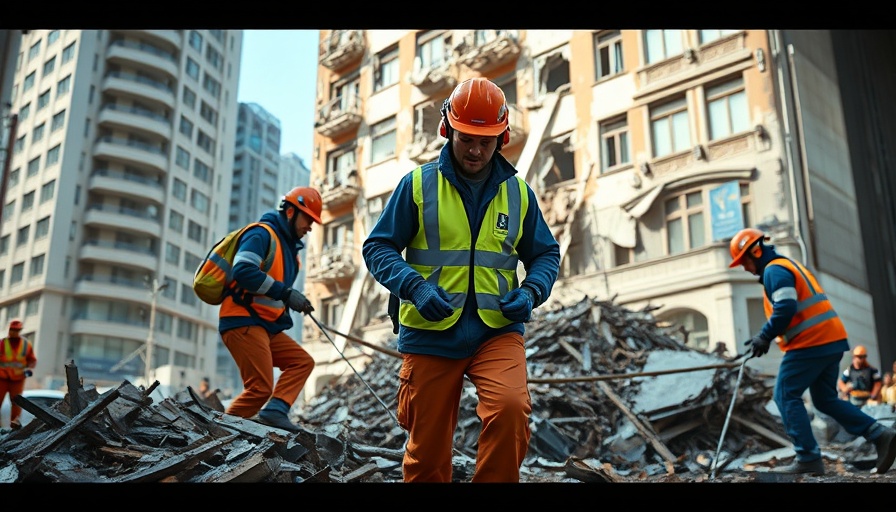
Understanding the Rising Importance of Earthquake-Resilient Designs
As we navigate an age where extreme weather events and natural disasters loom ever more prominently in the global consciousness, the necessity for earthquake resilience in design and construction has reached new heights. With over 1,500 earthquakes of at least a 5.0 magnitude occurring worldwide in 2024 alone, it is clear that builders, architects, and facility managers must prioritize seismic considerations in their projects.
Innovative Strategies in Earthquake-Resistant Construction
Consider how architecture and engineering have evolved with regards to earthquake-proofing. Modern solutions employ advanced materials and groundbreaking techniques designed to mitigate the destructive forces of tectonic shifts. Methods such as base isolators allow buildings to absorb seismic waves effectively. These isolators work by separating a building's structure from its foundation, reducing the energy transfer during an earthquake.
Furthermore, damping technologies, akin to car shock absorbers, are being integrated into building designs. These dampers can be placed between structural elements, dissipating vibrational energy, thus safeguarding a building's integrity during seismic events. For example, hydraulic systems and pendulum mechanisms are now commonly utilized to counteract lateral movements caused by earthquakes.
Legislative Push: The Case of California
California stands as a prime example of a region responding proactively to seismic threats. Following the significant earthquakes and subsequent studies, legislation has mandated stricter evaluations and retrofitting measures for healthcare facilities, ensuring they can withstand seismic events. As John Leuenberger, a veteran structural engineer, notes, there has been a surge in seismic awareness, bolstered by government oversight pushing for the advancement of earthquake-resistant construction.
The Role of Collaborative Efforts in Resilience Engineering
Creating earthquake-resilient buildings demands a formidable partnership among architects, engineers, and facility managers. Such collaborations enhance design functionality and performance, ensuring that buildings are not only structurally sound but also conducive to swift recovery following seismic incidents. This multi-disciplinary approach enables inclusivity in addressing diverse concerns related to safety and practicality.
Technological Innovations: Paving the Way for Future Resilience
Innovations are continuously redefining how we approach design in earthquake-prone areas. Materials like shape memory alloys and fiber-reinforced plastics are gaining popularity for their ability to endure significant deformation without losing structural integrity. In tandem with sustainable practices, these materials hold the potential to offer greater resistance to seismic forces while maintaining environmental consciousness.
Real-World Applications: Successful Earthquake-Proof Structures
Successful case studies offer practical illustrations of how earthquake resilience can be achieved. The Torre Mayor in Mexico City, designed with advanced seismic technologies, withstood a major earthquake shortly after its completion, underscoring the effectiveness of innovative design. The building's steel and concrete composite structure showcased how designer ingenuity and advanced engineering practices can save lives while preventing vast economic losses.
Conclusion: Preparing for Tomorrow
As we continue to confront the risks posed by natural disasters and extreme weather events, fortifying our built environment with earthquake-resilient designs is no longer optional but imperative. For those involved in building and maintaining our urban landscapes, taking actionable insights from these developments can inform future projects while safeguarding communities.
To explore how to integrate these innovative designs into your own projects, it is essential to engage with industry experts, attend workshops, and delve into the latest research on resilient building practices. The road to safety begins with informed decisions today.
 Add Row
Add Row  Add
Add 






Write A Comment